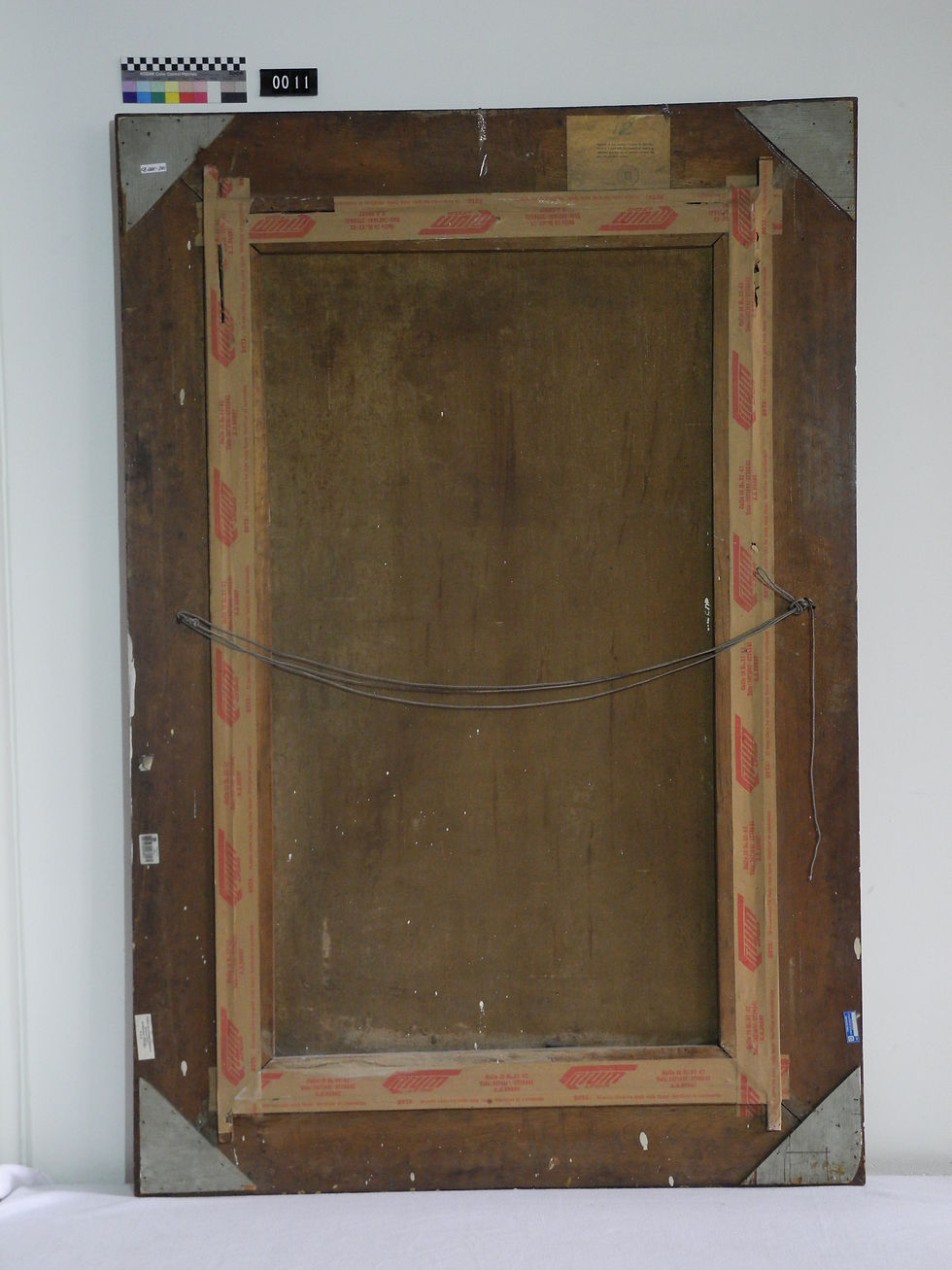Maria Carolina Peña Mariño
Easel Painting Conservator

Bogotá City Council
Project directed by the Fundación para la Conservación del Patrimonio Cultural (FUNCORES) and audited by the District Institute of Cultural Heritage. It entailed the conservation treatment of 21 easel paintings and 29 works on paper, belonging to the Bogotá City Council.
I was part of a team of 20 Conservators and performed the conservation treatment of two paintings from the 20th century.
Keep reading for more information about the treatment og these two paintings.


Before treatment (Whole front)

Before treatment ( Whole back)

After treatment (Whole back)

Before treatment (Whole front)
Portrait of Francisco de Paula Santander by Francisco Antonio Cano. 1933.
Oil on canvas
(95X108cm)
The painting was hanged in an uncontrolled environment (high and fluctuating levels of RH) which caused conservation issues such as planar distortions, tide marks and mold growth on the canvas support. Also, it exhibted minor tears, paint losses, mild varnish discoloration and dirt deposits both in the front and back
The treatment main focus was to disinfect the canvas support to stop the mold growth. Once this was accomplished, the small tears were mended and planar deformations were addressed. Then the painting was fully cleaned (surface cleaned and varnish removal) and the losses were filled and retouched.

Before treatment (whole front)

Before treatment (whole back)

After treatment (Whole front)

Before treatment (whole front)
Portrait of Gonzálo Jiménez de Quesada by Ricardo Acevedo Bernal. 1926
Oil on canvas
This painting is one of the masterpieces from the Bogotá City Council collection. Its main problem was a thick uneven layer of yellow and oxidized varnish layer, as well as the huge amount of dust and grime deposited on top of it, which obscured the painting's original cromatic values and beautifully excecuted details Underneath, the paint layer was very abraded and there were a few small paint losses. The canvas was out of tension.
The conservation treatment produced a major improvement of the whole image because it allowed the vibrant colors and textures to be seen. The varnish was so thick and poorly adhered in some areas that it could be peeled off gently with a scalpel. Neverthless, the elimination of this layer was done using an organic solvent mixture.
Besides the aformentioned the canvas was surface cleaned, the distortions were flattened and the painting was re-streached to an adequate stretcher. The paint losses were filled and then retouched, together with the abrassions.